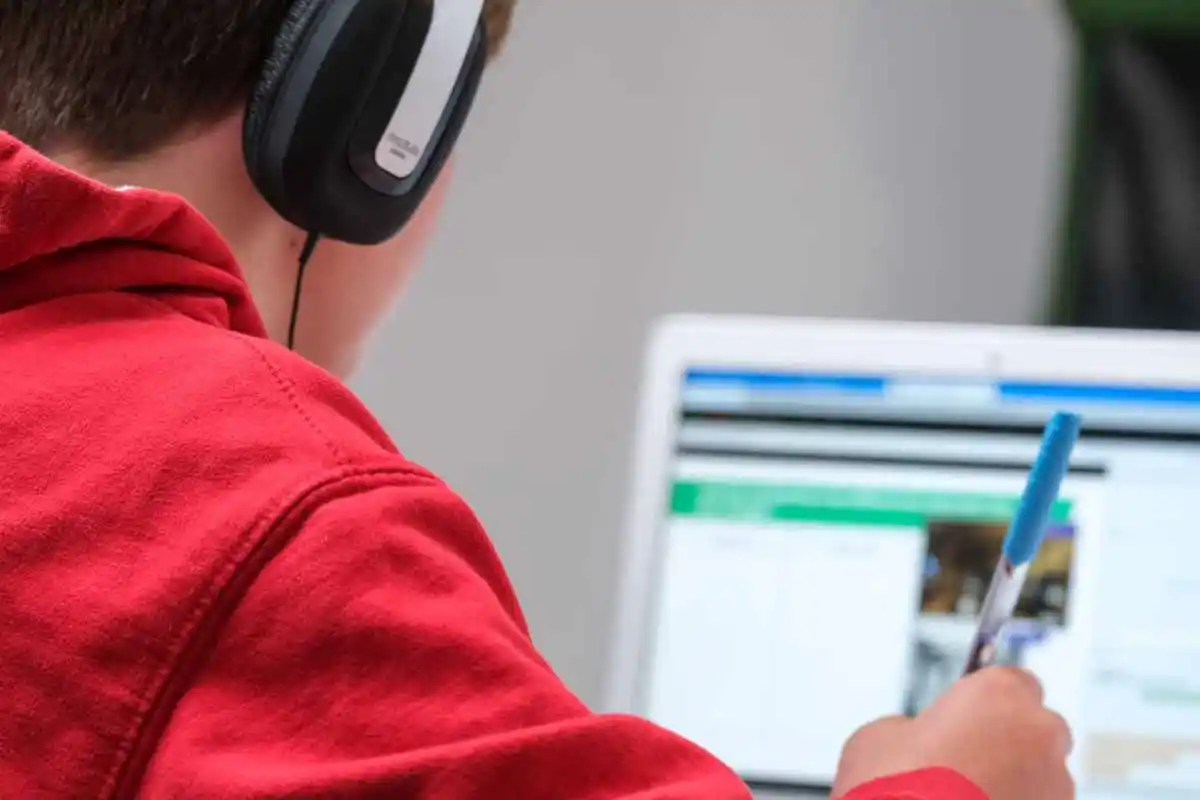The Education Blog

The Future of Online Learning: Trends & Innovations
Online learning provides more accessibility and flexibility than traditional education. Technology is making it more dynamic, personalised, and immersive. AI and virtual reality are making digital learning more fun and effective.
In this article, we’ll explore the innovations shaping the future of online education. We will also examine their benefits and the challenges they must overcome.
The Rise of Online Learning: A Brief Overview

Digital education has experienced massive growth over the last decade. MOOCs, corporate e-learning platforms, and virtual universities are changing how we learn.
Factors Driving Online Learning Growth
- Technological Advancements: High-speed internet, mobile devices, and AI-powered platforms have enhanced e-learning accessibility.
- Workforce Demand: Employers now value digital skills more. This makes online courses key for career growth.
- Global Accessibility: Students worldwide can now access top-tier education without geographical limitations.
- Pandemic Speed-Up: COVID-19 pushed schools to go digital, changing how education works in the long term.
- Cost-Effectiveness: Online courses tend to be cheaper than traditional education. This makes learning accessible to more people.
Key Trends Shaping the Future of Online Learning
1. Artificial Intelligence (AI) & Personalised Learning
AI is changing e-learning. It creates personalised learning experiences for each student.
How AI Enhances Learning
- Adaptive Learning Platforms: AI analyses student performance and adjusts content difficulty accordingly.
- Automated Grading & Feedback: AI-powered assessments provide instant feedback, reducing instructor workload.
- Chatbots & Virtual Tutors: AI-driven bots assist students with queries, offering 24/7 support.
- Predictive Analytics: AI can forecast student success and recommend tailored learning paths.
- Language Processing Tools: AI translation and speech recognition enable learners to cross language barriers.
2. Virtual & Augmented Reality (VR/AR) in Education
VR and AR are changing digital education. They make learning more interactive and engaging.
Applications of VR & AR in E-Learning:
- Virtual Classrooms: Students can attend classes in 3D virtual spaces, enhancing collaboration. Medical students can do virtual surgeries. Engineers can also practice complex designs.
- Augmented Reality Textbooks: Interactive AR elements make digital textbooks more engaging.
- Virtual Field Trips: Students can visit historical sites, museums, and natural wonders from home.
- Hands-On STEM Learning: AR boosts science and engineering. It offers 3D models of molecules, circuits, and physics simulations.
3. Gamification & Interactive Learning
Gamification integrates game elements into learning platforms, boosting engagement and motivation.
Benefits of Gamified Learning:
- Reward-Based Progression: Badges, leaderboards, and achievements encourage participation.
- Scenario-Based Learning: Real-life simulations enhance problem-solving skills.
- Collaborative Challenges: Multiplayer educational games foster teamwork and engagement.
- Increased Retention: Studies show that interactive and gamified learning improves long-term information retention.
- Personalised Learning Paths: Gamification changes to fit each skill level. This makes learning easier for every student.
Kahoot!, Duolingo, and Classcraft are top examples of gamification in online education.
4. Microlearning & Bite-Sized Content
Short lessons suit today’s learners. They like quick, straightforward content instead of long courses.
Why Microlearning is Effective:
- Higher Retention Rates: Shorter lessons improve information retention.
- Flexible Learning: Learners can complete modules at their convenience.
- Mobile-Friendly Approach: Ideal for on-the-go learning via smartphones and tablets.
- Quick Skill Acquisition: Perfect for professionals looking to upskill efficiently.
- Less Cognitive Overload: Breaking down information into small segments makes learning less overwhelming.
Platforms like LinkedIn Learning and Udemy are now using microlearning for skill development.
5. Blockchain for Secure & Verifiable Certifications
Blockchain technology ensures secure and tamper-proof digital credentials for online learners.
Blockchain Applications in Education:
- Digital Diplomas: Securely stored and easily verifiable academic credentials.
- Skill-Based Certifications: Employers can validate skills without manual verification.
- Decentralised Learning Records: Learners maintain control over their educational history.
- Reduced Fraud: Blockchain eliminates fake degrees and falsified certifications.
- Transparent Credentialing: Institutions can issue and track credentials seamlessly.
Schools like MIT and Harvard use blockchain to give out verified digital diplomas.
The Role of AI & Data Analytics in Online Learning

AI-Powered Learning Assistants
AI-driven assistants provide real-time support, helping students navigate courses and answer queries efficiently.
Big Data & Learning Analytics
By analysing student engagement and performance, big data helps educators:
- Identify struggling students and offer targeted support.
- Optimise course content based on learning patterns.
- Improve student retention rates by addressing challenges proactively.
- Personalise teaching methods to suit diverse learning styles.
- Track learner progress and predict future outcomes based on past performance.
The Future of Online Learning in Different Sectors
1. Higher Education & Universities
Universities are growing their digital options. They use hybrid learning models that mix online and offline education.
- Virtual degrees are gaining recognition alongside traditional qualifications.
- AI tutors assist students with assignments and coursework.
- Global university collaborations offer shared online curriculums.
2. Corporate & Professional Training
Businesses are leveraging e-learning trends and platforms for employee upskilling and compliance training.
- AI-powered HR tools recommend personalised training.
- Virtual simulations train employees in real-world scenarios.
- E-learning platforms integrate with workplace productivity tools.
3. K-12 Education
Online learning platforms for kids now use AI tutors, adaptive learning, and gamification, which help make learning more engaging.
- Digital whiteboards allow real-time teacher-student collaboration.
- AR applications bring subjects like history and science to life.
- Online tutoring platforms make personalised education accessible.
Challenges & Ethical Considerations in Online Learning
While the future of online learning is promising, there are challenges to overcome.
Accessibility & Digital Divide
Not all learners can access technology equally. This creates gaps in digital education opportunities.
- Efforts are needed to provide affordable internet and devices.
- Governments and NGOs are working on bridging this gap.
Data Privacy & Security
- Institutions must comply with data protection regulations.
- Cybersecurity measures must safeguard sensitive student data.
Quality Assurance & Accreditation
Making online courses credible and standardised is very important for schools and employers.
- Regulatory bodies must develop universal accreditation standards.
- Institutions must maintain rigorous curriculum quality.
Final Thoughts: The Future is Digital

Technological innovations are creating a brighter future for online learning. They make education more accessible, enjoyable, and efficient. With AI, VR, and blockchain, e-learning trends are moving toward a more connected world. AI personalisation, VR classrooms, and blockchain certificates will transform digital education.
As institutions, educators, and learners adapt, the future of online education shines bright. It opens up limitless learning opportunities. Technology and innovation will shape education in the next ten years, creating an inclusive and empowering experience for everyone.









